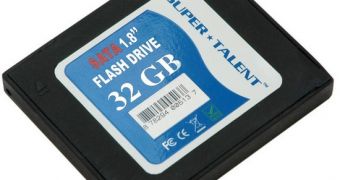The Eee PC sold great last year, and continues to sell even better. Many sub-notebook fans can hardly wait for the next-generation of Asustek's ultra-mobile Eee. While the Asus Eee PC is getting more and more popular, rumors regarding the premature wearing out of its different hardware components are frightening its users.
It seems that the newest target of these rumors is the computer's solid-state drive and it's alleged short lifespan. The SSDs are not only hard to find as compared to the common hard-drives, but they are also very expensive, so having to replace the beloved drive is not quite a thing one might willingly do.
Most of the users are aware that the solid-state drives provide important advantage over the conventional spinning platters, such as speed or shock resistance, but there are categories of users who panic at the thought that their drive will constantly wear out until it gets completely useless. Here we come to shed some light over the new technology and dismantle these gloomy, rumor-based fears.
According to a report from storagesearch.com, the vast majority of the solid-state drives that are currently available on the market are estimated to support between 1 to 5 million write cycles before failure would occur due to the limitations inherited from the Flash-based NAND technology. Moreover, the fastest solid-state drive can deliver a maximum write speed of about 80 MB/s. The solid-state drive inside the Asustek PC is estimated to write at a maximum speed of 3MB/s due to its hardware limitations.
A simple math operation would show that it would take more than 84 years of constant writing for the PC's SSD to fail. Moreover, the official wiki estimates that the total lifespan for a Eee PC solid-state drive varies around 100,000 - 200,000 write cycles, which translates in about 25 years of operation alleging a 6-hour per day average use time.
There is enough reason to stop whining and enjoy the latest gadget in the storage world, that provides enhanced reliability over the hard-disks. And remember that, although the drive costs around $400, we are sure that you will upgrade your actual configuration several times until 2033, when your drive is scheduled to irreparably wear out.

 14 DAY TRIAL //
14 DAY TRIAL //